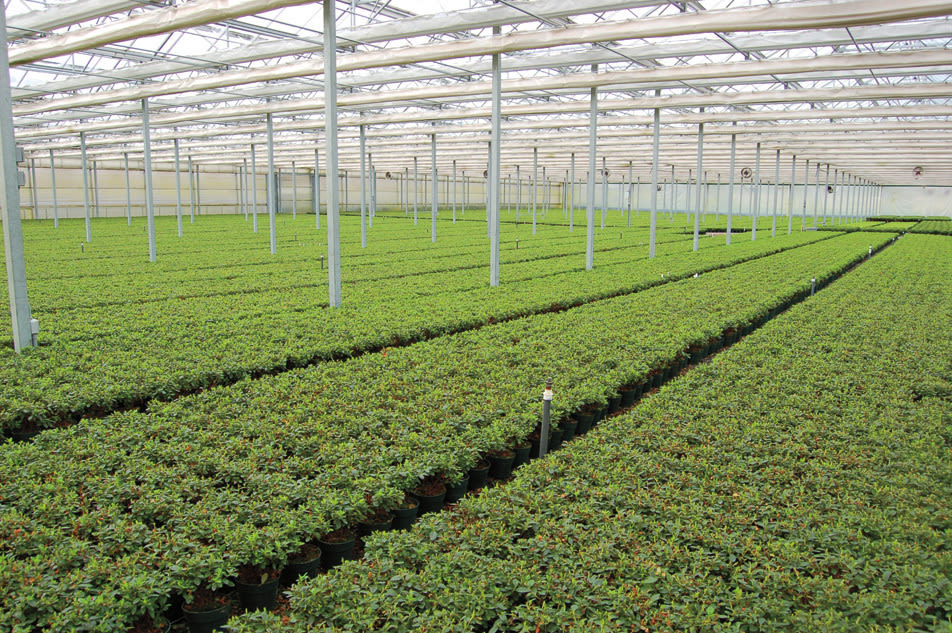Flower Futures

Woodburn’s azaleas are just part of an industry that employs 20,000 Oregonians.
Image: Brian Taylor
IN THE SEA OF GREEN ABOVE, potted azaleas—a mainstay cash crop for Oregon’s nursery industry—await Mother’s Day in a Woodburn Nursery & Azaleas greenhouse. Woodburn, the third-largest single azalea producer in the US, nurtures the plants for at least two years. Just before Mom’s day, the nursery will rush its azaleas to PDX; the company, one of Delta’s largest freight customers, ships as many as 150,000 plants at a time.
Such just-in-time logistics make it tough to run a nursery—particularly in rough economic times. Back in 2007, the housing and construction booms meant lush times for Oregon nurseries. The Willamette Valley–centered industry harvested almost ?$1 billion in sales, enough to surpass cattle as Oregon agriculture’s biggest sector. Then recession brought a brutal pair of shears. Revenues dropped 17 percent in 2008 and another 10 percent in ’09—a two-year decline of about $248 million.
As this year’s spring crops, like Woodburn’s azalea mother lode, rush to market, nurserymen hope prosperity blooms anew. At Portland’s late-winter Yard, Garden, and Patio Show, attendance was high and consumer confidence perfumed the air. “There was definitely a sense that people are investing in their backyards,” says Elizabeth Peters of the state’s nursery association.
Some greenhouses have taken advantage of the austerity-era DIY gardening vogue. At West Linn’s Yoshitomi Brothers, for example, kale, squash, and sturdy perennials like black-eyed Susans replaced pre-recessionary floral bling like pansies and poppies.
For long-haul crops like azaleas, such quick strategic shifts are impossible. “We couldn’t really cut our production,” says Brian Taylor, Woodburn’s sales manager. “If you’re Columbia Sportswear, you just stop making product. You can’t stop growing plants.” After staying the course, Taylor believes rosy—sorry!—holiday plant sales foretell serious green this spring. “Most people still like to have some color around their homes,” he says.




